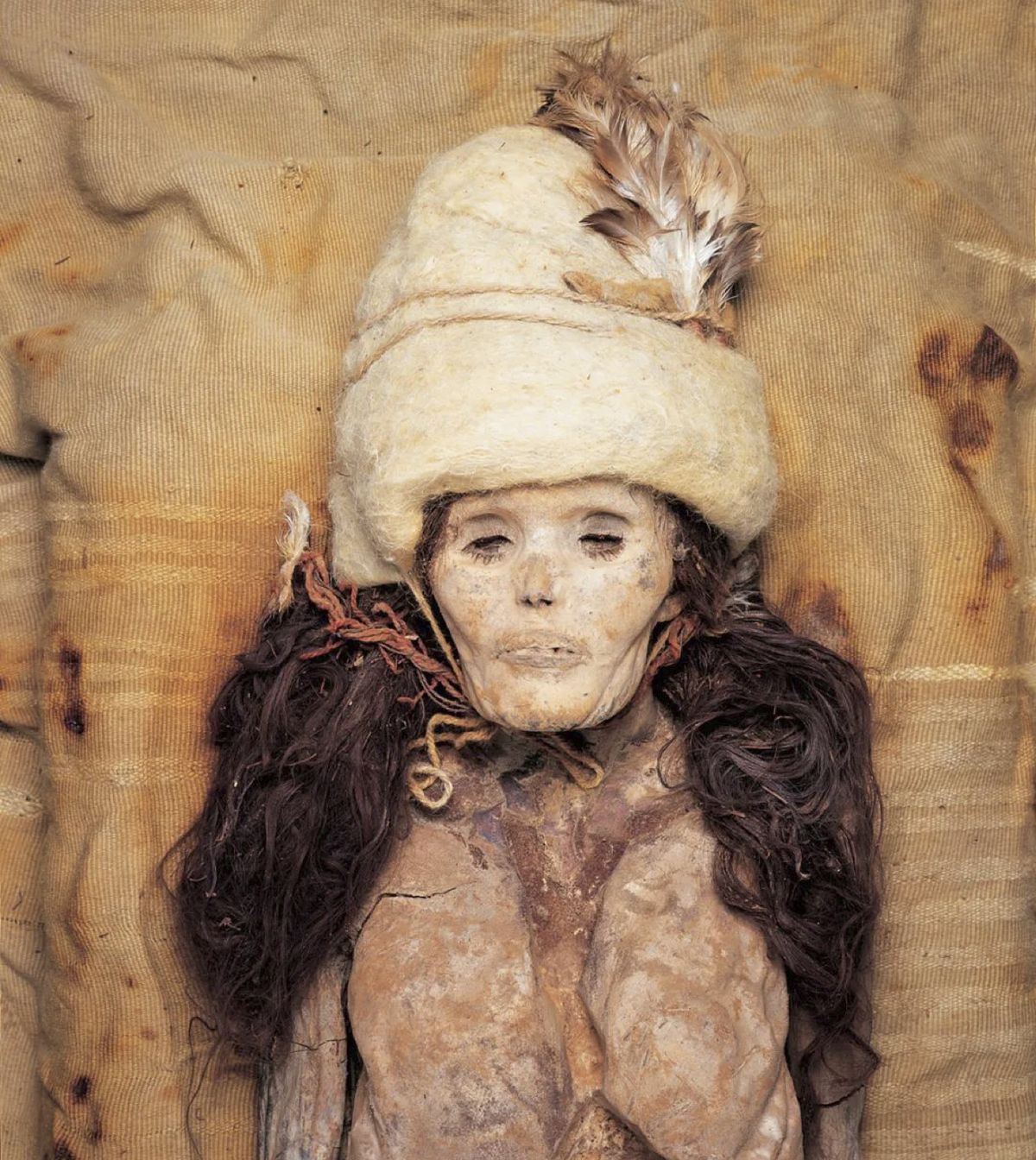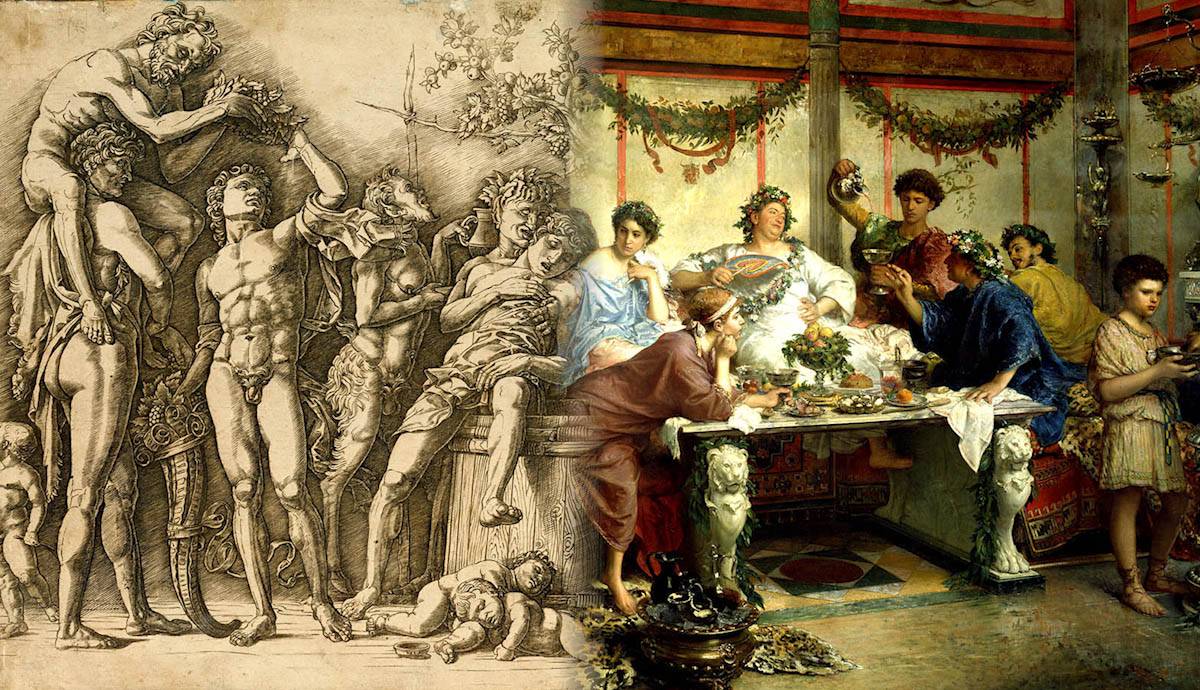
1. Ancient Rome Borrowed Many Drinking Habits from the Greeks

The Ancient Roman approach to alcohol was influenced by Phoenician and Greek culture. This largely permeated via Greek cities in Southern Italy. Roman drinking behaviors were in many respects similar to Greek, though they had some differences. Originating from the Greek symposium, elite Romans gathered on couches to drink in private houses and banquet rooms.
Wine was the drink of choice at the very heart of ancient Rome’s culture. Ciders and other fermented drinks were known but were all second to wine. Wine was a ‘civilized’ drink and became central to the Roman way of life. Beer, fermented grains, and milk were decidedly un-Roman and could carry barbarous connotations.
Get the latest articles delivered to your inbox
Sign up to our Free Weekly Newsletter
Rome’s drinking culture evolved over the centuries. Roman culture adapted over nearly eight centuries. Drinking was part of this. A small-holder of Rome’s archaic period did not have the access, means, or cultural inclination to drink like a Roman of the Republican or Imperial periods. As Ancient Rome evolved, it grew in wealth and sophistication and gained access to prestige goods like wine and slaves. It also experienced cultural exposure to the exotic drinking habits of the Hellenic East.
2. In Ancient Rome, Exposure to Wine Expanded Greatly from the 2nd Century BCE

We have learned that there were many varieties of wine in ancient Rome. In the 2nd century BCE, Cato the Elder wrote De Agricultura, instructing elite landowners on how to establish their estates. Several wine varieties are mentioned and a focus on viticulture shows the impact that wine had on the Romans.
Cato mentions how to imitate Coan wine (a famous wine from Kos), suggesting Romans were already aware of Greek wines. According to Sallust, this love of Greek wine grew markedly when soldiers under Sulla returned from Asia Minor around 80 BCE. The economic and moral impact of foreign wines became a concern. Thus, a series of sumptuary laws (starting from the late 3rd century BCE) imposed limits on the cost of foreign wines, as well as many other items.
Roman wine was also coming of age. The first Italian wine, highly praised, was a Falernian type that had a celebrated vintage in the consulship of Lucius Opimius in 121 BCE. ‘Opimian’ wine was a favorite of writers like Cicero. It was so famous that it was still being talked about over a century later. By the first century CE, the naturalist Pliny, mentions a flourishing of ancient Roman wines:
“Our ancestors set the highest value upon the wines of Surrentum; but at a later period, the preference was given to the Alban, or the Falernian wines. More recently, again, other varieties of wine have come into fashion, quite in accordance with that most unreasonable mode of proceeding, according to which, each person, as he finds a wine most to his taste, extols it as superior to all others.”
[Pliny, Natural History, 23.20]
3. Wine Parties and Banquets Became All the Rage for Ancient Roman Elites

By the late Republic, Roman banquets and drinking parties had become a big deal.
A convivium saw wealthy Romans reclining on couches at lavish dinner parties. Here, elites displayed their power and wealth through wine, food, entertainment, and hosting. Dictated by social status, guests were seated relative to status. Poets like Martial complained that tight hosts could even serve or mix good and cheap wines relative to the importance of their guests. A bit naughty.
At a commisatio guests would recline in luxury for a drinking party. The behavior here varied from respectable to utter drunkenness. It was not uncommon for there to be a master of ceremonies (a magister bibendi) who set the strength of wine and directed guests in toasts and entertainment. Recitations, jokes, competitions, and drinking games, using dice and forfeits, were not uncommon. The history of alcohol has changed little in some regards.
In elite circles, wine was served from large ornamental bowls, jugs, and cups. Marc Anthony – the ‘Young Bacchus’ – had special golden cups that he took even on campaign. Mixed to varying strengths depending on the company and occasion, wine was mixed at anything from 1 part to 3, or even 8 parts water. Drinking raw wine (Merum) at full strength was uncouth: the mark of a real boozer or someone not civilized.
Ancient Roman drinking practices were hard-core. Some Romans induced vomiting in special bowls to relieve their guts. This allowed dedicated boozers to rally and continue. Some prepared for drinking nights like athletes. A belief that taking hot baths worked up a good thirst was a trend referenced by Pliny and Juvenile. These and other shocking drinking practices are referenced casually by poets like Martial and Juvenile. Keep in mind that this was the ‘elite’ class they were talking about!
4. Rome Developed a Pervasive Drinking Culture
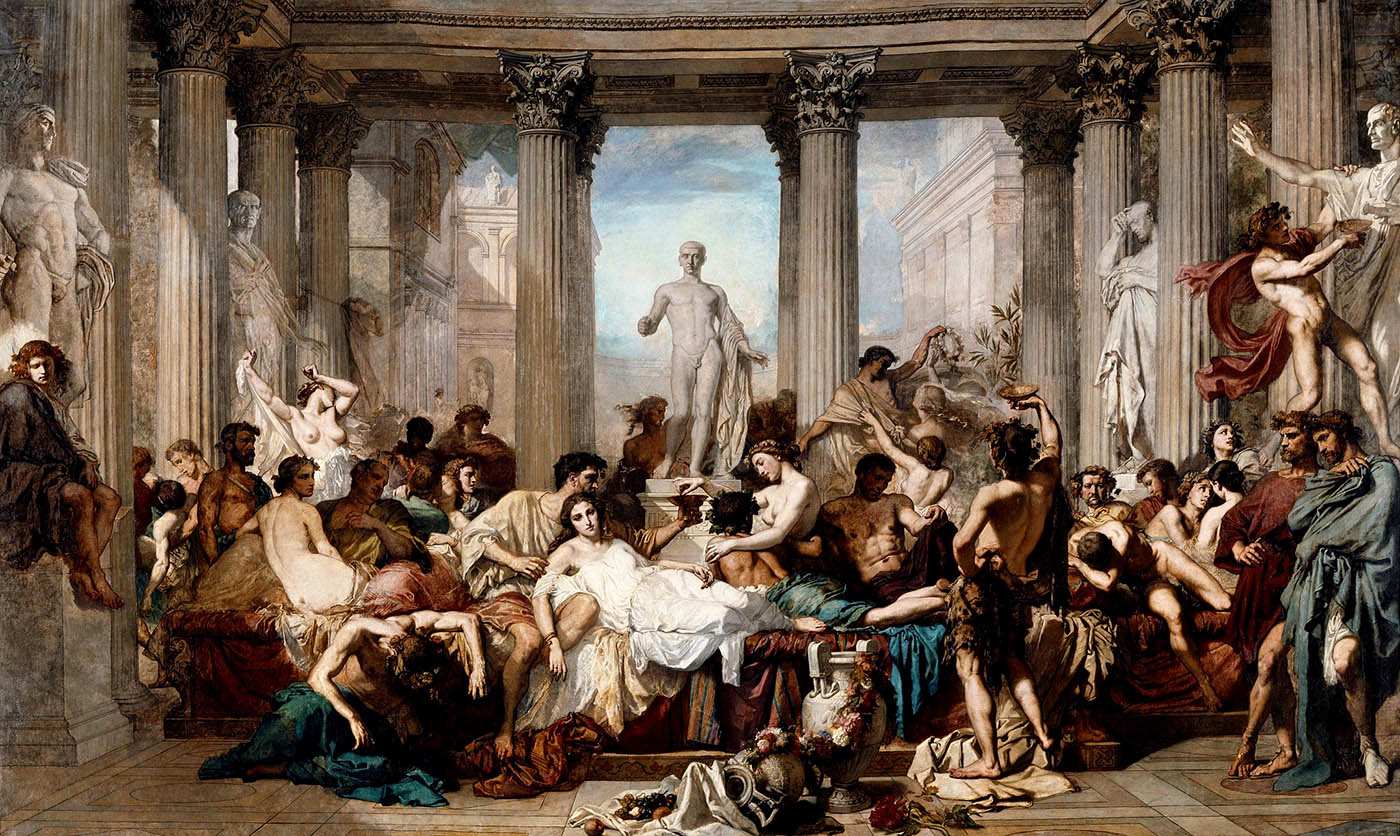
Eventually, as the empire became wealthy, all classes of people drank, from soldiers, peasants, and even slaves. Romans came to expect access to wine, even though quality differed enormously between the classes. Wine was a ubiquitous drink, not unlike beer, ale or mead was to medieval Europeans.
Roman soldiers used a wine-based drink called posca. Posca became an essential drink for the legions. A kind of cheap wine and vinegar mix, taken with water and herbs. Posca was a peasant drink that was said to be refreshing and energy enhancing. It sustained soldiers on campaigns and became a staple of the Later Republic. A relationship between soldiers and drinking is part of the wider history of alcohol and Romans were no exception:
“Think how many soldiers who are not always sober have been entrusted by a general or a captain or a centurion with messages which might not be divulged!”
[Seneca, Moral Letters, 83.12]
Common drinking dens, cookhouses and taverns were a feature of society. They are mentioned often and are profuse at sites like Pompei and Herculaneum. With their distinctive open fronts and wide service counters, graffiti also attests to a vibrant drinking culture. In Pompeii, an inscription from Hedone’s Tavern proclaims:
“You can drink here for one as, if you give two, you will drink better; if you give four, you will drink Falernian.’
(CIL IV 1679)
Taverns and cookhouses are interchangeably referenced and get bad press. Snooty Roman writers portrayed them as dens of iniquity. Places where ancient Rome’s great unwashed went to drink, eat, and gamble:
“ … search for him in some big cookshop! There you will find him, lying cheek-by-jowl beside a cut-throat, in the company of bargees, thieves, and runaway slaves, beside hangmen and coffin-makers, or of some eunuch priest lying drunk with idle timbrels. Here is Liberty Hall! One cup serves for everybody; no one has a bed to himself, nor a table apart from the rest.”
[Juvenal, Satire 8.170]
Elites were hugely prejudiced against the poor, though it’s naive of us to think that ancient Rome didn’t have some real ‘dive-bars.’
5. Wine Was Also About Power, Prestige, and Wealth
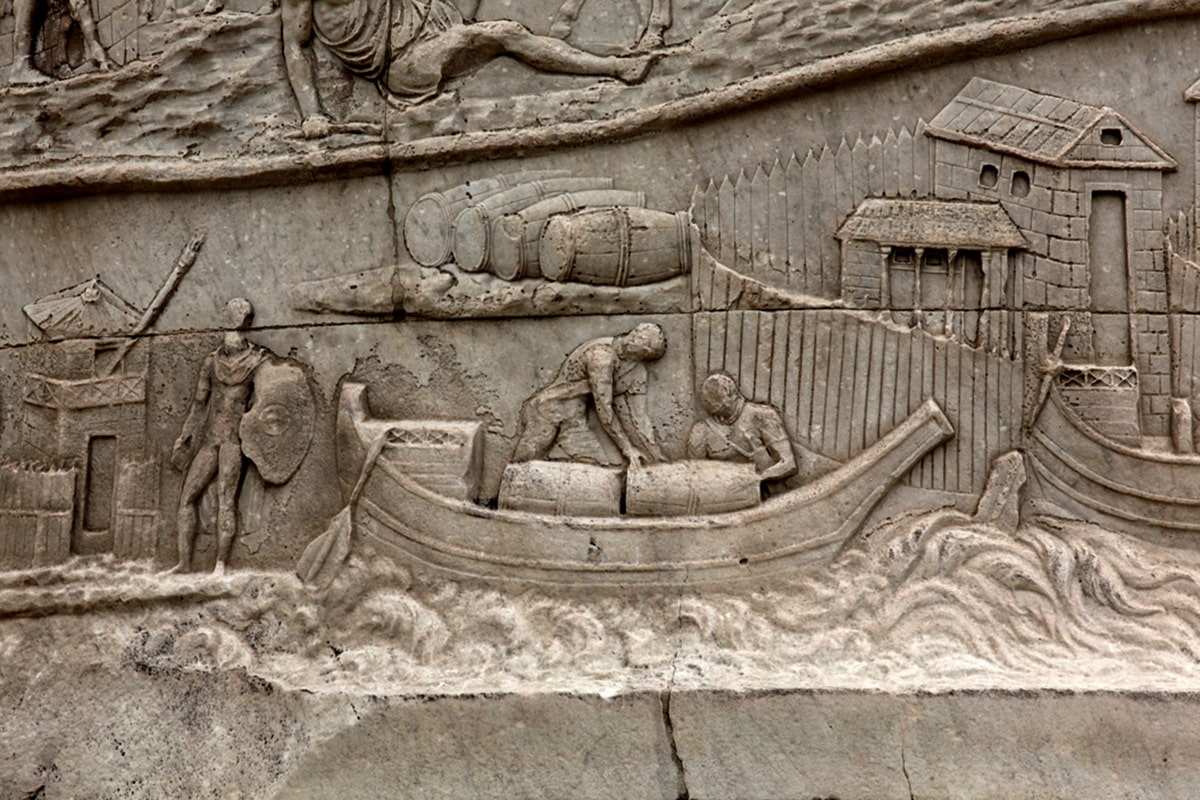
Banquets and drinking parties were a component of political power. Being a public figure (a man of state) was essential in maintaining status and influence. Roman elites operated within highly established structures of patronage and clientship. Impressing one’s network could make or break a political career. Some ancient Romans ran up huge debts on expensive wines and entertaining. Yet, this was not as crazy as it sounds because entertainment built political capital, and in ancient Rome, that was as good as gold.
Wine was a prestige commodity outside of Rome also. Wine represented a major component of ancient Rome’s cultural ‘soft’ power. Much like the British spread tea and cricket, the Romans spread wine and viticulture. Obviously, they brought other benefits (“What have the Romans ever done for us?”) but wine was up there. An abundance of evidence demonstrates that Spanish, Gallic, and British tribal elites keenly embraced Latin wine and drinking practices in their quest to emulate the Roman way of life.
Viticulture was crucial to the Roman economy. Central to production and trade, wine (along with olive oil, grain, and husbandry) was critical to ancient Rome’s agrarian economy. Estates, slaves, and vineyards were key. Whether for the traditional idyll of the gentleman farmer, or the intensive farming estates of the latifundia, writers like Cato, Varro, Pliny and Columella, all focus on the production of grapes and the management of vineyards. For the Senatorial elite, wine and farming were a tested and ‘respectable’ way to grow wealth and consolidate huge capital.
Wine was important in governance and politics. Historians focus on the ‘bread and circuses‘ that kept Rome’s urban poor in a placid mood. However, wine was also significant. In the reign of Augustus, resentments rose around wine’s high price and scarcity. This forced the morally austere emperor to rebuke the populace “ that he had provided them with enough aqueducts to not go thirsty.” In the mid 4th century BCE also, wine shortages actually caused violence during the prefecture of Orfitus. Keeping the wine flowing in Rome was obviously an important component of governance.
6. Drinking Was a Moral Issue

Drinking and morality is a common theme in the history of alcohol. Celebrating the moral austerity of their founding fathers, traditional Roman ideals were characterized by restraint, self-control, and sobriety. The fear that wealth and empire eroded traditional Roman values was a constant moral theme.
Traditionalists would shun gluttony and paragons of virtue, like Cato the Elder, were hailed for their moral fiber. Cato drank the same quality of wine as his household slaves! He demonstrated the ancient Roman virtue of frugality, exercised with cast-iron moderation. It was not about being mean. It was about demonstrating moral dignity, self-control, and strength of character.
However, by the 3rd century BCE, Romans were becoming concerned with the profligate behavior of the elite and a whole series of sumptuary laws followed in the late Republic and imperial periods. This was needed as some Romans, like the famous Lucius Lucullus, were spending cart-loads of money on banquets, entertainment, and drinking.
A man’s drinking said a lot about his character. Men like Pompey were celebrated for sobriety, while the notorious Cataline and his conspirators were portrayed as desperados, laden in drink and debt. Cicero’s political attacks on Marc Anthony as a drunkard who guzzled wine from dawn to dusk were brutal:
“You, … drank such quantities of wine at the marriage of Hippia, that you were forced to vomit the next day in the sight of the Roman people. An action disgraceful not merely to see, but even to hear of!”
[Cicero, Philippics, 2.63]
Much was propaganda, but there was always a genuine Roman concern for public decency and the character of their leaders. The drinking habits of emperors, were even scrutinized:
“There is a saying of Marcus Cato that [Julius] Caesar was the only man who undertook to overthrow the state when sober.”
[Suetonius, Life of Julius Caesar, 53]
Augustus was reputed to be a modest drinker, though Tiberius loved wine from his early army days. Claudius loved a snifter and would induce himself to vomit with a feather to drink more. Nero, a real boozer, was ‘never too ill to refuse a cup of wine,’ and so it went.

Roman Philosophers frequently debated the value of alcohol and drinking. The Epicureans, although they believed in pursuing pleasure, preached moderation in wine. But, equally, the stoics cautioned balance, though alcohol of itself was not bad:
“Occasionally we should even come to the point of intoxication, sinking into drink but not being totally flooded by it: for it does wash away cares, and stirs the mind to its depths, and heals sorrow, just as it heals certain diseases.
[Seneca, On Tranquillity of Mind, 17.]
Pliny, however, emphasized the personal costs of drinking, making a strong case for restraint:
“… the intoxicated never see the sunrise and so shorten their lives. This is the reason for pale faces, hanging jowls, sore eyes and trembling hands that spill the contents of full vessels. … This is what people call ‘enjoying life’: but while other men daily lose their yesterdays, these people also lose their tomorrows.”
[Pliny, Natural History, 34.142.]
The drinking habits of the urban poor worried some moralists.
“Let us now turn to the idle and slothful commons.… These spend all their life with wine and dice, in low haunts, pleasures, and the games. Their temple, their dwelling, their assembly, and the height of all their hopes is the Circus Maximus.”
[Ammianus Marcellinus, Roman Antiquities, 28.4.28]
Some commentators suggested that just as rich ancient Romans wasted their lives on drinking and banquets, the poor wasted their energies on drinking, arena sports, and gambling. “This country is not what it used to be” is an ancient trope.
Ancient Rome worried about women and alcohol. This hit a nerve for the patriarchal Romans, and the laws of the early Republic forbade women to drink at all. In ancient Rome, a woman could even be killed by her husband for drinking without permission. Pliny tells us several stories where women were punished, curtailed, or fined.
Constraints did relax, but the Pater Familias (male head of household) always retained legal control over the women of his house. This sensitive area was as much about protecting the honor of elite families as anything else. No accident that Augustus banned his wayward daughter, Julia, from access to wine. The immodesty of some women in drinking was a recurrent Roman fear:
“At last she comes, all red, thirsting for the whole wine jug … from which another sextarius is consumed before any food, so as to build a ravenous hunger, while she refunds it [vomits] and splashes the ground with her intestines purged. Stream’s rush over the marble, a golden basin reeks of Falernian [wine].”
[Juvenile, Satires, 6.424-431]
Misogynistic, double-standards are a feature within the history of alcohol. Yet the Real Housewives of Ancient Rome were viewed by some to be out of control.
7. Alcohol Was an Important Aspect of Religious and Medicinal Practice
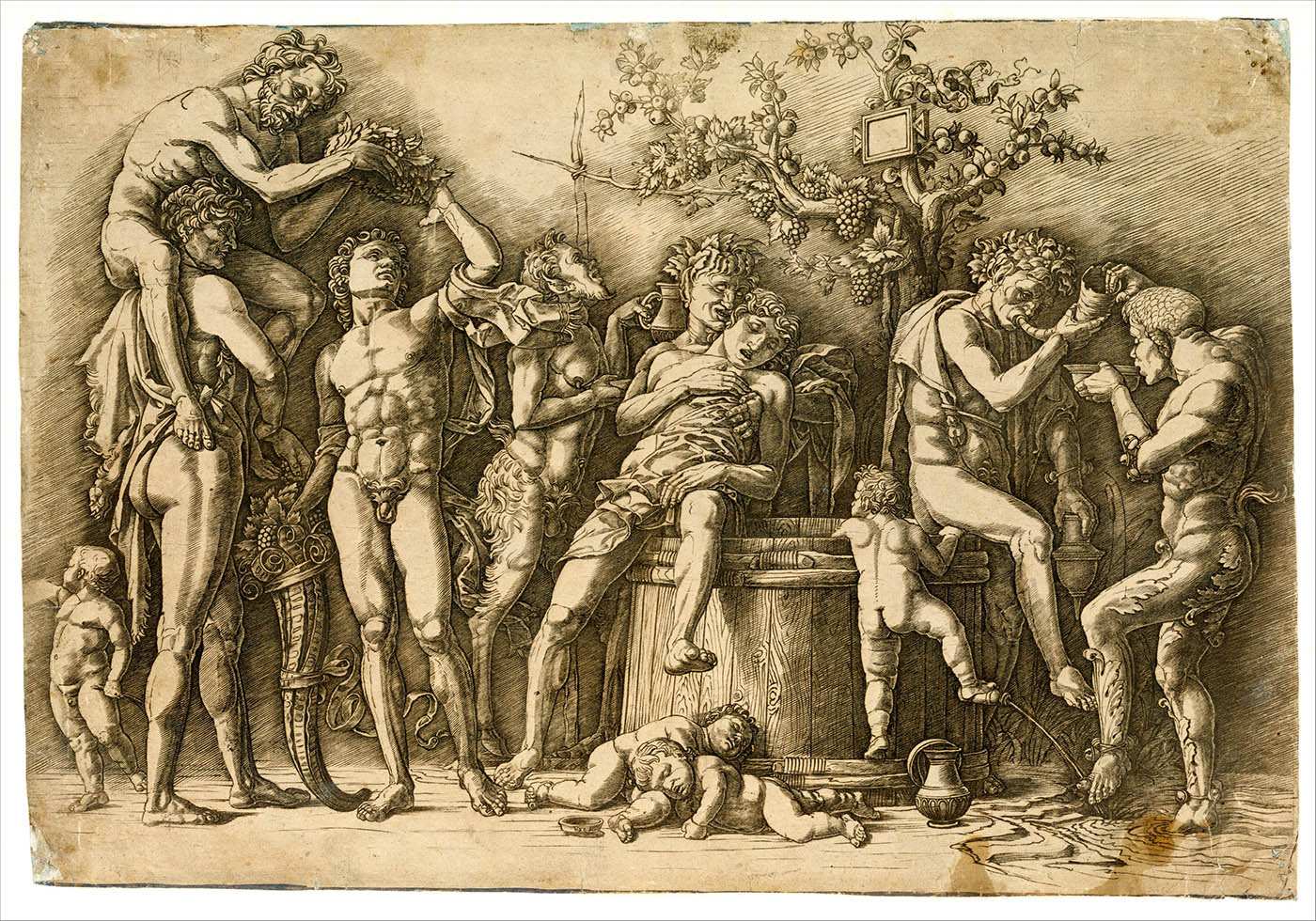
Alcohol was central to religious rites and celebrations. Though Pliny tells us that in the time of Kings, wine was too valuable to be wasted on libations (offerings), this did not last.
Worship of the ancient Roman wine god Bacchus led to real trouble in the year 186BCE. Then, the festival of the Bacchanalia induced a moral panic amongst ancient Romans. The Bacchic cult was shrouded in mystery, but it gave women (of all classes) a prominent role. It involved wild nocturnal dancing, heavy drinking, and inevitably sexualized behavior. Too much for traditionalist Romans! The Senate accused the cult of a conspiracy (which was unlikely) and suppression soon followed. With its foreign Greek origins and mystery rites, involving wine and women, the cult’s actual crime was being a moral challenge to conservative Roman values.
Other religious festivals placed alcohol central to practice. Amongst these, the festival of the Bona Dea (Good Goddess) was a notorious drinking celebration. The winter festival of Saturnalia also saw heavy boozing when slaves had the chance to be served upon by their masters.
In medicine, wine was important to the ancient Romans. The physician Galen used wine to disinfect the wounds of gladiators. Both he and Celsus recommend wine as an effective pain killer.
Different Roman wines were cited for their medicinal benefits. This included attributes like laxative, digestive and restorative benefits. Wines from Surrentum were praised for their healing, while some Falernian vintages were said to be good for the stomach.
“… those [wines] of Setia promote the digestion, having more strength than the Surrentine wines, and more roughness than those of Alba. The wines of Falernum are not so powerful. Those of Stata are but very little inferior in quality to the wines already mentioned. It is universally agreed that the wines of Signia are extremely beneficial in cases of derangement of the bowels.”
[Pliny, Natural History, 23.21]
‘Derangement of the bowels!’ No one wants that!
Conclusion: The History of Alcohol in Ancient Rome
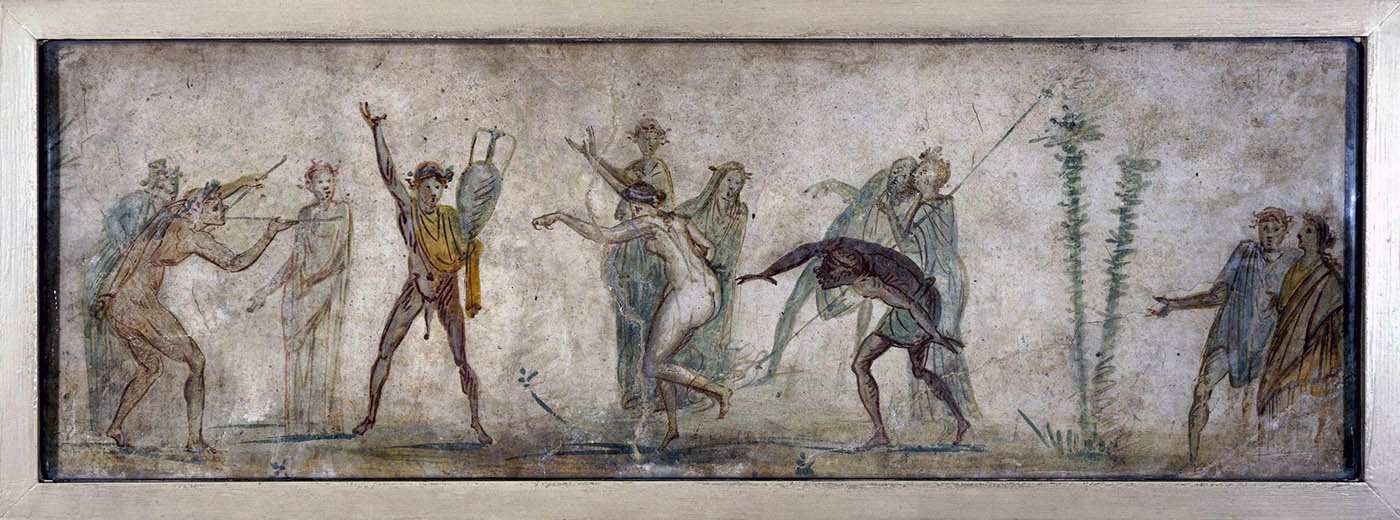
So, there we have it, a stagger through Rome’s drinking history in 7 facts. Ancient Rome constituted a key chapter in the history of alcohol.
Although Roman society and culture were significantly different, can we be sure that the human drivers which formed Roman behavior, were so markedly different to those that govern our own relationships with alcohol?
It’s a subjective question that may well be different for each of us, but it’s fascinating to consider.





